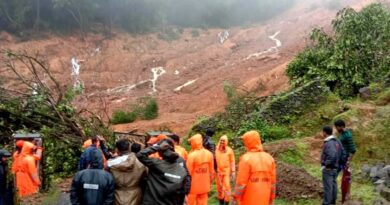Lockdown significantly improves water quality of Ganga and Yamuna
Amid the nation-wide lockdown to curb the spread of the COVID-19, the water quality of Ganga river in Uttar Pradesh has seemingly improved. There were also signs of improved air quality in cities like Varanasi and Kanpur.
After a long while, river Yamuna is flowing full and cleaner at this time of the year.
The water quality of the most polluted Indian rivers, Ganga and Yamuna have significantly improved since enforcement of the nationwide lockdown that has led to reduction in dumping of industrial waste into it.
The dissolved oxygen level upstream in river Ganga is 8.9 mg per litre while in the downstream the dissolved oxygen level is 8.3 mg per litre. This clearly shows that water quality has improved significantly, and it is good for bathing. Healthy water should have a dissolved oxygen level of at least 7 mg/litre, says Kalika Singh, an officer of UP Pollution Control Board (UPPCB).
According to the real-time water monitoring data of the CPCB, out of the 36 monitoring units placed at various points of the Ganga river, the water quality around 27 points was suitable for bathing and propagation of wildlife and fisheries. The parameters that the monitoring stations monitor online are dissolved oxygen (more than 6 mg/litre), biochemical oxygen demand (less than 2 mg/litre), total coliform levels (5000 per 100 ml) and pH (range between 6.5 and 8.5) to assess the health of the river.
Also Read: Cauvery, tributaries look cleaner as pandemic keeps pollution away
Earlier, other than stretches in Uttarakhand and a couple of places as the river enters Uttar Pradesh, the river water was found to be unfit for bathing the whole way till it drains into the Bay of Bengal in West Bengal. Experts said the water quality of the Ganga river has improved since the enforcement of the lockdown, especially around the industrial clusters.
The Ganga enters Uttar Pradesh in Bijnor district and passes through major districts such as Meerut, Bulandshahar, Aligarh, Kanpur, Allahabad, Varanasi, among others. In Kanpur as well Ganga has become cleaner in the last few days.
The lockdown has certainly improved the health of River Ganga which many projects of the government couldn’t do.
Also Read: Coronavirus lockdown leads to improved air quality

Yamuna
It’s observed that perhaps due to the lockdown due to COVID-19, industries in Haryana and Delhi are not drawing water from the river. There were several spells of rain in March, which could have raised the water level. Water level in Vrindavan and Mathura had also seen a steady rise in the past few weeks.
In Agra, surplus water from the Ganga Jal Pipeline was also being released in the Yamuna. The two water works in Agra receive 140 cusec of water continuously from the 130 km long pipeline. The entire quantity is not used. The excess goes into the Yamuna, according to a local corporator Anurag Chaubey.
The river behind the Taj Mahal, along Mahtaab Bagh has come alive, offering a breathtaking view. Due to the lockdown, the Taj Mahal, for the first time in its history, is relaxed and breathing freely, deprived of the daily human load, as all monuments have been shut down in Agra for visitors. The Archaeological Survey of India is utilising the opportunity to clean up and carry out repairs long overdue.
The city too is largely pollution free, due to restrictions on movement of vehicles. Only an occasional ambulance or a police vehicle can be seen on the Fatehabad road, which has the largest concentration of hotels.




